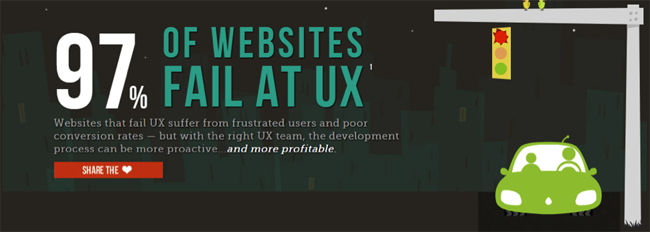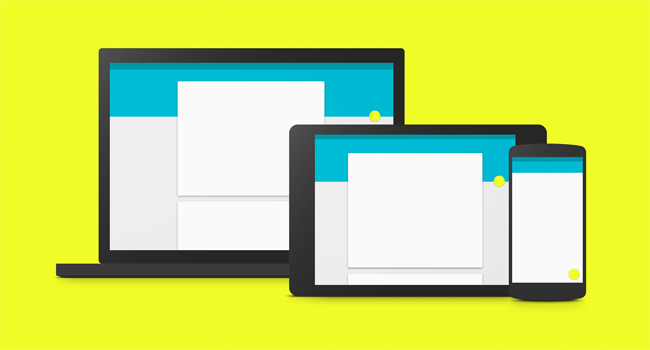Web design trends emerge year after year, as influenced by a number of factors. This year, six trends are expected to further drive the growth of the web. These are expected to make the most of popular and emerging technologies on the Internet and in mobile devices.
Obviously, the unstoppable growth of mobile tech as well as wearables is influencing the way websites are designed. As more people access the web through mobile gadgets such as smartphones and tablets, there is a need for web design to adapt to deliver a brand new experience.
The following trends are expected to play a major role in the development and growth of the web in the next year.
1.Responsive Web Design
Responsive web design is nothing new but it continues to be highly popular this year. As the diversity of web browsing devices increases, responsive web design is becoming a convenient option (if not a necessity) for most website and blog owners as it takes away the need to have different website versions (mobile and desktop).
This design trend is aimed at providing the optimal viewing experience regardless of the device used to browse a site. It enables the automatic adjustment of the layout and the number or size of site elements in relation to the resolution or size of the screen of the device used to view a site. This design approach makes websites look neat and easily navigable no matter what device is used to view them.
The impact of responsiveness on the user experience is greater than one would immediately imagine but the reality is that if the majority of your site visitors are using some kind of mobile device to access a non-responsive site, then results will be poor.
Research has proven that poor user experience design in general negatively affects the earning ability of businesses online. 68% of website visitors give up on sites lacking a good experience and typically every dollar invested in UX yields $100 in return for businesses.

The first HTML5 websites introduced when HTML5 was still a new concept showcased the refreshing new experience made possible by scrolling-based sites. They ditched the common page or tab based design observed in most websites. Now, many websites are already using this approach.
Scrolling-based navigation is particularly advantageous when browsing sites through mobile devices since it provides the convenience of simply swiping the screen down or up to go to the different sections of a site. It takes away the difficulty of clicking buttons or links that are usually too small for thumbs to precisely press on mobile devices.
3. Flat Design
Apple did not necessarily introduce the “flat design” but it arguably made it more popular as it became the new design approach for iOS 7.
This design creates a modern appearance for websites as it veers away from the dropped shadows, embossing effects, textures, and grains that characterized the user interface of software and operating systems in the past. It also offers the advantage of more efficient use of space and the relative ease of identifying interactive or clickable site sections or elements.
4. Material Design
If Apple made the flat design more popular through its notable use in iOS 7, Google appears to be making material design a major trend for website design as well as for the designing of software or app UI’s. This design is considered to be an expansion from the “card” motifs employed in Google Now.
It offers the advantages of being highly intuitive and aesthetically appealing. It makes use of seams and shadows to provide context to interactions, partially simulating interactions with actual cards. Because it is being used by Google in the design of the extremely popular Android operating system for mobile devices, it is expected to have a significant impact on web design and the growth of the web in general.
5. Large Background Media (Images and Videos) and More Optimized Media Formats
Again, this is not a new design approach. Many free templates for Blogger, WordPress, and those of free website creators feature designs that come with large beautiful background images. However, this type of design is expected to become more common as more websites developers target visitors who browse the web with smaller displays, through their smartphones or tablets. Large background images easily make sites stand out or look more appealing especially when viewed through the relatively small screens of smartphones and tablets.
On the other hand, it is expected that size-optimized image and video formats will be put to more common use. It is still unclear if the WebP format will finally take over JPEG or if the improvements in JPEG will allow it to keep its throne as the most widely used image format on the web.
Google has been aggressively promoting WebP along with WebM since they offer smaller file sizes with unnoticeable quality differences. Whether or not Google succeeds, what’s important is that image file sizes are successfully reduced for the benefit of faster web page loading and bandwidth efficiency.
6. “Microinteractions”
Microinteractions can be considered as a scheme in web design that seeks to further encourage visitor activity within a site. These are small features within a site that focus on a single task. Examples of which are the ability to rate or like content, post comments, search for content within a site, subscribe to a newsletter, or chat with other visitors within a site.
For those who are planning to start their own websites or blogs, many of the design trends mentioned here don’t necessarily require technical skills or coding know-how to be implemented.
In addition to the use of a powerful CMS like WordPress to get off the ground with building functional websites, there are many online website builders that promise to help novices and non-techies do more with the latest trends in web technology. IM Creator for instance, offers powerful and user-friendly drag and drop page building tools as well as access to thousands of free templates; empowering anyone to launch online without complete immersion in the study of web design.
As web technology continues to improve it’s becoming easier for anyone to adapt while as a whole, we are all able to accomplish more.




